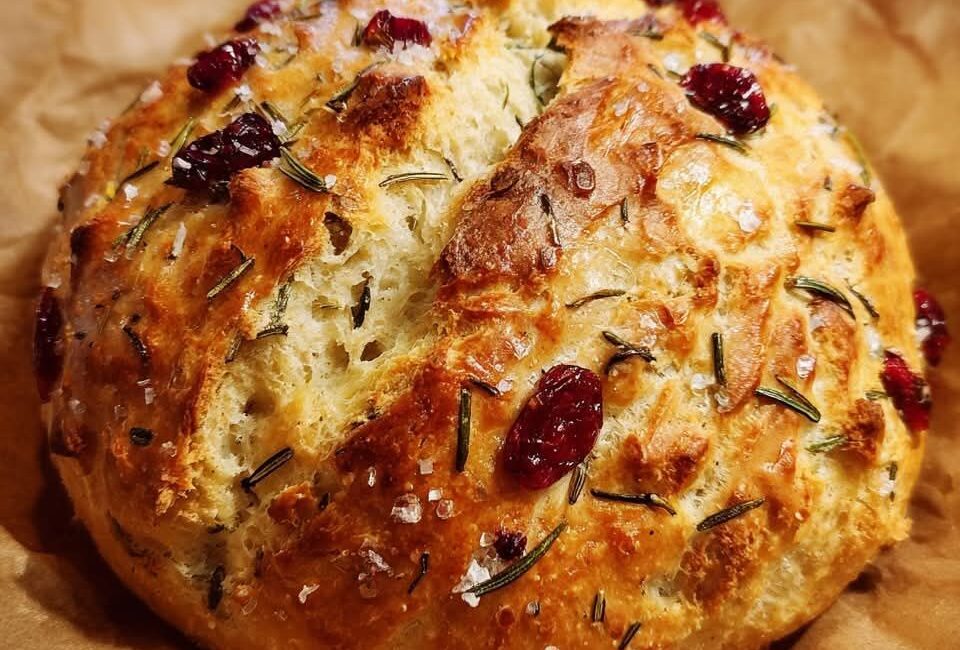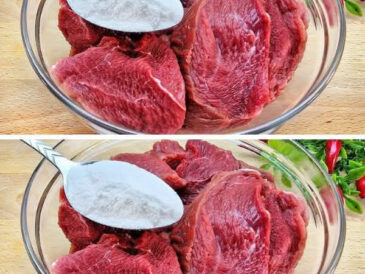Step 3: First Rise and Fermentation
Cover the bowl with plastic wrap or a damp towel. Leave it at room temperature (around 70°F/21°C) for 12 to 18 hours. During this time, the dough will rise and develop bubbles, indicating fermentation.
Step 4: Preparing to Bake
After fermentation, preheat your oven to 450°F (230°C). Place a Dutch oven or heavy oven-safe pot with a lid inside to heat for 30 minutes.
Step 5: Shaping the Dough
Turn the dough out onto a generously floured surface. Gently shape it into a round ball, avoiding deflating too much gas.
Step 6: Baking
Carefully remove the hot Dutch oven from the oven. Place the dough inside, drizzle 1 tbsp olive oil on top, and sprinkle flaky sea salt liberally.
Cover with the lid and bake for 30 minutes. Then remove the lid and bake for another 10–15 minutes until the crust turns golden brown and crisp.
Step 7: Cooling and Serving
Let the bread cool completely on a wire rack before slicing. This helps set the crumb and prevents it from becoming gummy.
7. Baking Essentials: Equipment and Techniques
- Dutch Oven: Essential for creating steam during baking, which forms a crusty exterior.
- Oven Thermometer: Ensures accurate baking temperature.
- Flour for Dusting: Prevents sticking when handling dough.
- Cooling Rack: Allows air circulation to keep crust crisp.
8. Troubleshooting Common Issues in No-Knead Bread
- Dense Texture: May result from too little fermentation or insufficient flour.
- Sticky Dough: Normal, but adding a bit more flour when shaping can help.
- Pale Crust: Oven temperature may be too low or baking time too short.
- Underbaked Center: Ensure to bake until internal temperature reaches about 200°F (93°C).
9. Creative Variations and Flavor Enhancements
- Add walnuts or pecans for crunch.
- Substitute cranberries with raisins, cherries, or dried figs.
- Infuse dough with lemon zest for brightness.
- Incorporate garlic powder or sun-dried tomatoes for savory twists.
10. Serving Suggestions: From Breakfast to Dinner
- Toast slices and spread with creamy ricotta and honey.
- Pair with sharp cheeses and charcuterie for an elegant appetizer.
- Serve alongside hearty soups or stews for a comforting meal.
- Use as sandwich bread for turkey and cranberry sauce.
11. Storage Tips to Keep Your Bread Fresh Longer
- Wrap cooled bread in a linen towel or bread bag for short-term storage.
- For longer storage, slice and freeze. Toast slices directly from the freezer.
- Avoid plastic wrap which can trap moisture and soften crust.
12. Frequently Asked Questions
Q: Can I use instant yeast instead of active dry yeast?
A: Yes, but reduce rise time slightly.
Q: Can I add sugar or honey to sweeten?
A: Optional. Cranberries provide natural sweetness, but a small amount of honey can be added for flavor.
Q: How do I know when bread is fully baked?
A: It should be golden brown with a hollow sound when tapped and an internal temperature around 200°F.
13. Conclusion: Elevate Your Baking with This Simple yet Sophisticated Loaf
No-knead rosemary cranberry bread with olive oil and sea salt is a versatile, delicious, and nutritious artisan bread that requires minimal effort yet yields impressive results. Its combination of savory herbs, tart fruits, and rich olive oil offers a unique flavor profile that will delight your family and guests. With just a few ingredients and simple techniques, you can bake bread that rivals bakery quality and adds a touch of gourmet to your daily meals.
Start your baking journey today with this recipe, and discover the joy of homemade bread that’s as beautiful as it is flavorful.




